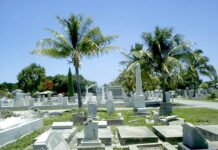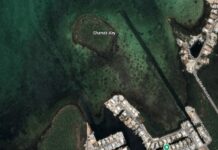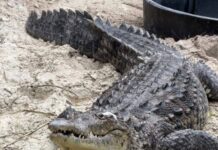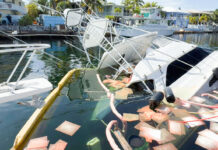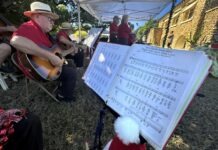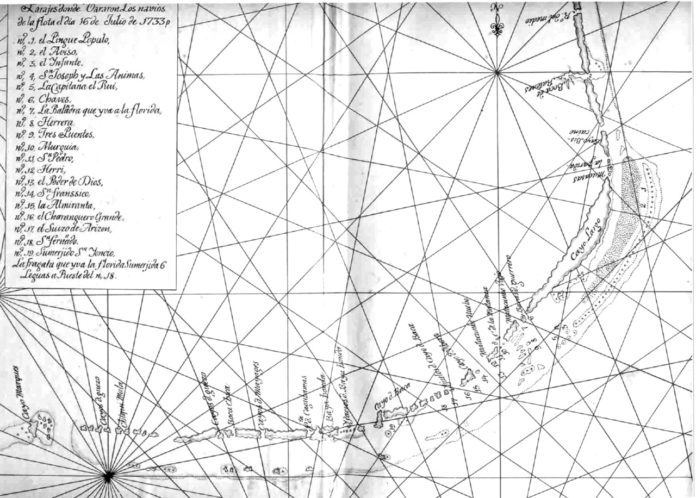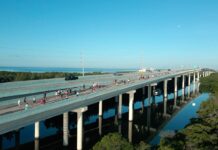The Spanish treasure fleets sailed away from the Old World for hundreds of years, bringing men and supplies to New World operations. On the trip back to Spain, the fleets returned with New World treasures of silver, gold, dyes, spices, timber, leathers and more.
The doomed 1733 New Spain Fleet wrecked off the Upper and Middle Keys, giving treasure hunters like Art McKee worldwide recognition. There are not a lot of mysteries left about the nearly 300-year-old event, but a few still intrigue historians and treasure hunters alike.
The parade began when 22 ships sailed out of Havana Harbor, Cuba, in the early morning of July 13, a Friday. On that first day, at least, it was nothing but clear skies and smooth sailing. Good fortune, however, would not be following. By Sunday morning, the weather had soured, and heavy waves, rain and gale-force winds began pounding the fleet.
Flags were raised, signaling for the fleet to return to Havana, but by that time, it was too late, and the New Spain Fleet was left to the mercy of nature’s fury. The carnage left behind was scattered over the 80 or 90 miles separating Key Biscayne from Key Vaca and consisted of fallen masts, sails, splintered planks, sunken treasures and hundreds of drowned, bloated bodies.
The fortunate souls to survive the hurricane, the shipwreck and the treacherous waves that pushed them ashore were thankful to be alive, for sure, and hopeful help would be sent to save them. News of the convoy’s fate was delivered to Havana on Saturday, July 21, and, within 24 hours, the sails of nine rescue ships equipped with supplies, food, divers and salvage equipment were hoisted up and flapping in the wind. One of the more interesting notes regarding the first salvage operation conducted by the Spanish in the days following the catastrophe is that the salvage team dispatched from Havana recovered more silver and gold than recorded in the fleet’s official manifests.
Clearly, the captains and crews of the fleet had loaded a significant amount of contraband before sailing away from the New World. Even after decades of treasure hunters scouring the wreck sites, coins and other treasures once stashed in chests continue to be discovered both at the reefs and by treasure hunters working with metal detectors along the shore.
Out of all the ships that left Havana on that fateful Friday the 13th, only one successfully made the Atlantic crossing home to Spain. The Senor San Joseph, also known as the El Africa and the El Navio Nuevo, survived the hurricane with minimal damage, including losing a topmast and some rigging. The ship found safe anchorage near Key Largo and was able to rescue the crews from the shipwrecked advance boats El Pinque and El Aviso before sailing home to Spain.
The wreck sites of the vast majority of the ships have been physically identified by historical documents and the treasure trove of divers who spent decades digging up nearly every wreck site associated with the 1733 Fleet. However, two wreck sites have proven difficult to pin down. Both ships, the San Fernando and El Floridana, are thought to have wrecked in the area of Long Key or Coffins Patch Reef off the coast of the Middle Keys. Evidence of a shipwreck associated with the 1733 ship has been discovered by treasure hunters, including artifacts that include coins at the shallow reef site. Still, no evidence of any ship from the fleet has been recorded.
The El Floridana, also recognized as Fragata Situada, was one of two vessels that accompanied the fleet when it sailed out of Havana but was not bound for Spain. The ship was carrying payroll to St. Augustine. The other auxiliary ship sailing for St. Augustine was the Little Balandra, also known as the Patache, carrying 256 barrels of flour. The Little Balandra remained afloat after the storm passed but had lost its mast. Some records indicate that the El Floridana was destroyed at the reef, with a lone survivor from the ship surviving the hurricane and the shipwreck, and washing up on Grassy Key. At least one report suggested it managed to return to Havana successfully.
The bigger Nuestra Senora de los Reyes, San Fernando, y San Francisco de Paula, also known as the San Fernando, is a different kind of story while also being kind of the same story.
The merchant ship carried more than 16,000 pieces of silver and, among other items, several boxes of chocolate. The fate of the San Fernando is different from just about every other ship in the fleet because the wreck site has never been identified.
Nothing, however, stays buried forever, and one day the fate of the El Floridana and the San Fernando will see the light of day. Of course, there is always the possibility that some treasure hunter discovered one of the wrecks or both sites long ago and kept it a secret – but again, nothing stays buried forever.



